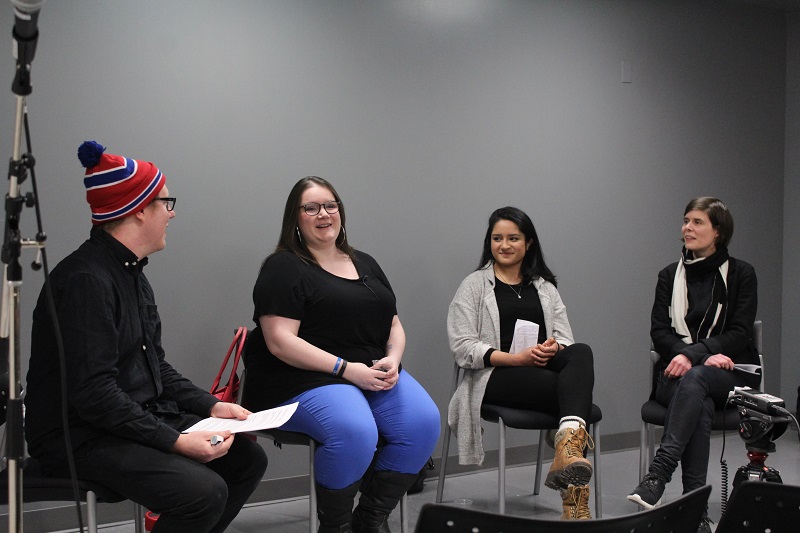A roundtable discussion on the evolution of professional women’s hockey
Meg Hewings, the general manager for Les Canadiennes de Montréal, remembers going to watch the 1990 Women’s World Hockey Championship in Ottawa. It was the first-ever women’s world championship. As a young hockey player, Hewings watched Team Canada don their now-famous pink-and-white jerseys for the first time.
“They actually created [those jerseys] because they didn’t know how to sell women’s sports,” Hewings said. “Right from the beginning, there has always been this weird tension about how women’s hockey truly is a part of the national narrative.”
Hewings took part in a panel hosted by Aaron Lakoff, a Concordia media studies graduate, titled “Power Play: A Roundtable on Women, Sports Journalism and Hockey” on Jan. 31. Held at the Feminist Media Studio on the Loyola campus, the panel discussed the growth of women’s hockey, sports journalism and feminism in hockey, among other topics.
“If we want to see the game that we watch reflected in real life, we have to build media that is going to amplify those voices that we want to hear,” Lakoff said.
Hewings was joined on the panel by Robyn Flynn, a reporter and broadcaster for organizations such as TSN 690, CJAD and The Athletic, and Safia Ahmad, a recent Concordia graduate currently working as the media relations manager for Les Canadiennes.
“We don’t get to hear conversations like this very often,” Lakoff said. “It’s rare to hear the words ‘feminism’ and ‘hockey’ together.”
Back in the 80s, when Hewings was growing up playing hockey, she said people couldn’t really understand that she played the sport. “They would say, ‘Oh, like field hockey?’ and I would say, ‘No, hockey on ice, our national [winter] sport.’”
For Hewings, one of the biggest moments in women’s hockey was the 1998 Winter Olympics in Nagano, Japan, when women’s hockey was included as an Olympic sport for the very first time, despite women’s hockey having been around as early as 1891.
“No one thought [women’s hockey in the Olympics] would ever happen, and it put the sport on the global stage,” Hewings said. “There was a lot of attention on the game for the first time. As a young student, I was trying to figure out how it was that we have this national sport that women were starting to be a part of, but somehow still not able to fully access it [the way men could].”
The sport has had its troubles growing, but Ahmad knows the momentum for women’s hockey is picking up. “There are more and more fans at the Canadiennes games, which is good to see, and there have been more mainstream media coming to our games,” Ahmad said. “It’s no longer about comparing women’s hockey to men’s hockey, but realizing that these are two different things.”
Flynn said she always hears fans reminisce about the days of the Original Six teams in the National Hockey League (NHL). Now, with the creation of two North American women’s hockey leagues—the National Women’s Hockey League (NWHL) and the Canadian Women’s Hockey League (CWHL)—Flynn said we are witnessing that same era in women’s hockey.
“We are creating a legacy,” Hewings added.
Lakoff said he hopes to roll out the podcast version of this panel discussion in the coming months. In the meantime, a video version can be found on Facebook.
Main photo by Alex Hutchins.




